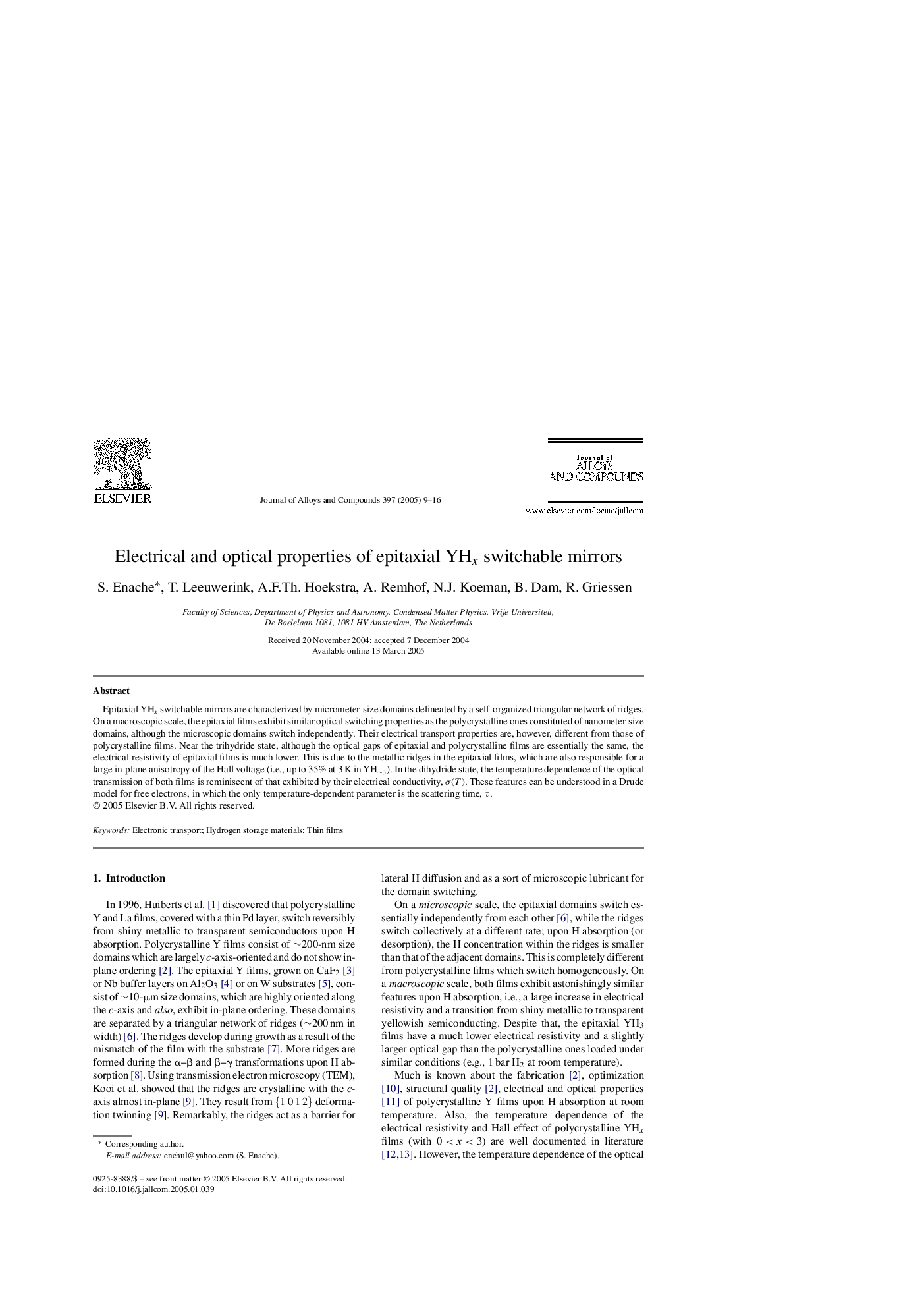| Article ID | Journal | Published Year | Pages | File Type |
|---|---|---|---|---|
| 9803589 | Journal of Alloys and Compounds | 2005 | 8 Pages |
Abstract
Epitaxial YHx switchable mirrors are characterized by micrometer-size domains delineated by a self-organized triangular network of ridges. On a macroscopic scale, the epitaxial films exhibit similar optical switching properties as the polycrystalline ones constituted of nanometer-size domains, although the microscopic domains switch independently. Their electrical transport properties are, however, different from those of polycrystalline films. Near the trihydride state, although the optical gaps of epitaxial and polycrystalline films are essentially the same, the electrical resistivity of epitaxial films is much lower. This is due to the metallic ridges in the epitaxial films, which are also responsible for a large in-plane anisotropy of the Hall voltage (i.e., up to 35% at 3âK in YHâ¼3). In the dihydride state, the temperature dependence of the optical transmission of both films is reminiscent of that exhibited by their electrical conductivity, Ï(T). These features can be understood in a Drude model for free electrons, in which the only temperature-dependent parameter is the scattering time, Ï.
Related Topics
Physical Sciences and Engineering
Materials Science
Metals and Alloys
Authors
S. Enache, T. Leeuwerink, A.F.Th. Hoekstra, A. Remhof, N.J. Koeman, B. Dam, R. Griessen,
